Here is a rifle that was given to me back in 1984 by a man who'd found it inside of an outbuilding or "out house" as he described it to me. It's lock is marked as having been made by H. ELWELL who reportedly made locks in Seneca County, Ohio between 1810 and 1812 or 1815. I'm not sure if that is correct now in light of recent information. Anyway, the barrel is 47" long. The length of pull is 13". The straight barrel is 15/16" wide from flat to flat and is .40 caliber. The forarm when I received it had several inches of wood missing down to the middle thimble, which was still there. It also had a strip of wood along the top of the right side of the forearm missing. These I had repaired long ago. It has no entry thimble and never did. The front sight blade and the forend cap are replacements as well as the frizzen spring retaining screw, top jaw and top jaw screw as well as the front lock plate bolt. There is an old repair of a broken wrist using a copper band held on with two screws. The double set triggers are capable of alternately firing the rifle using the set trigger or just using the front trigger by itself.
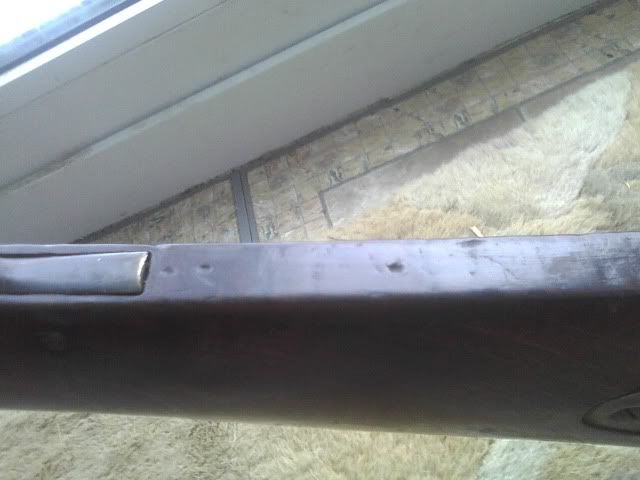

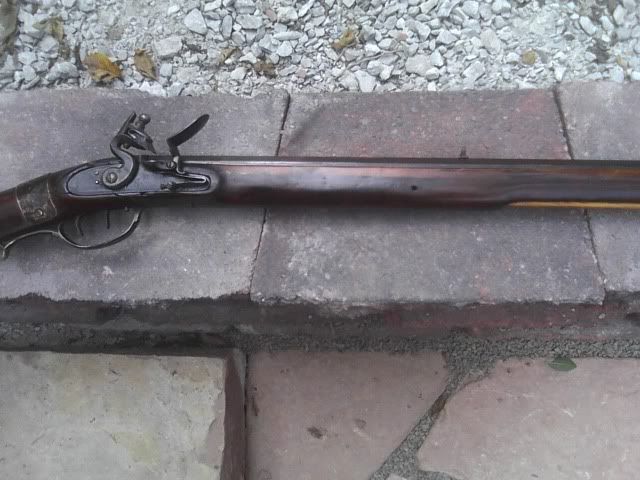


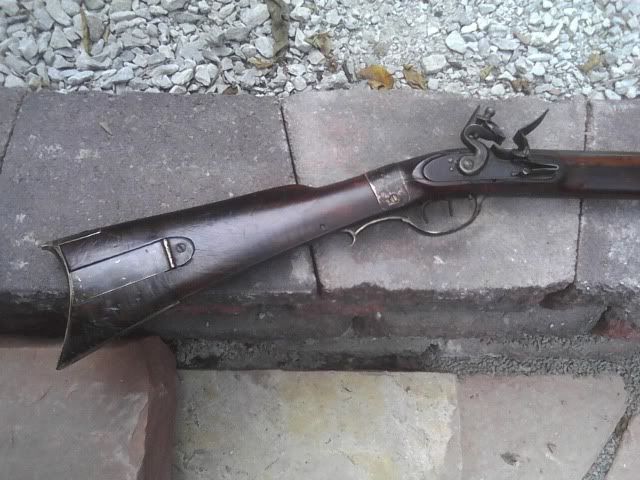
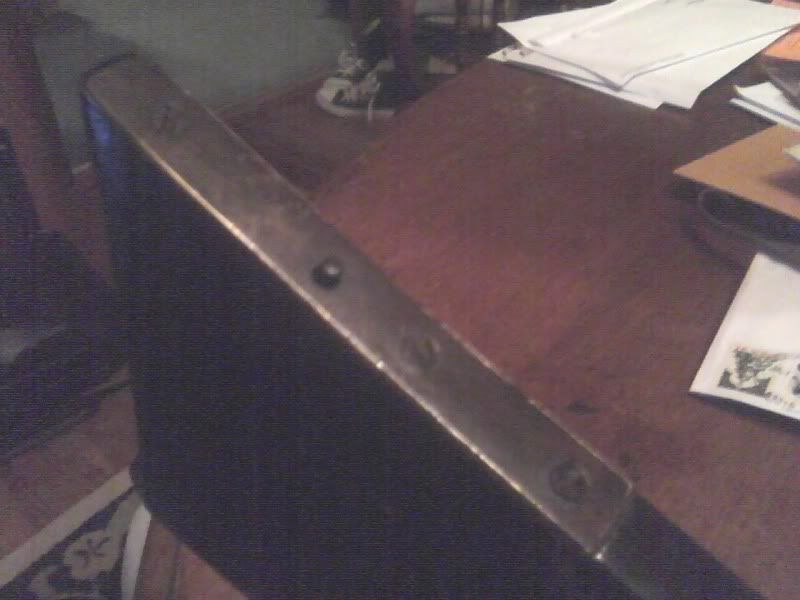
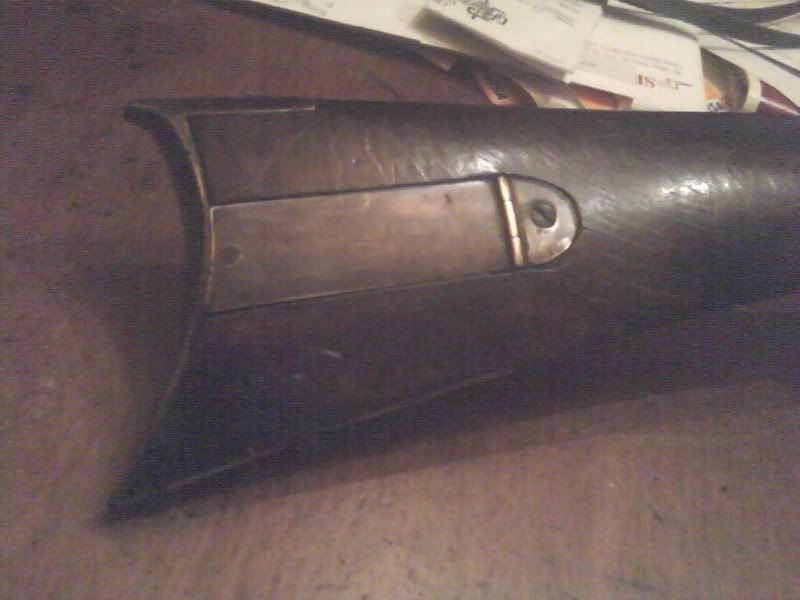
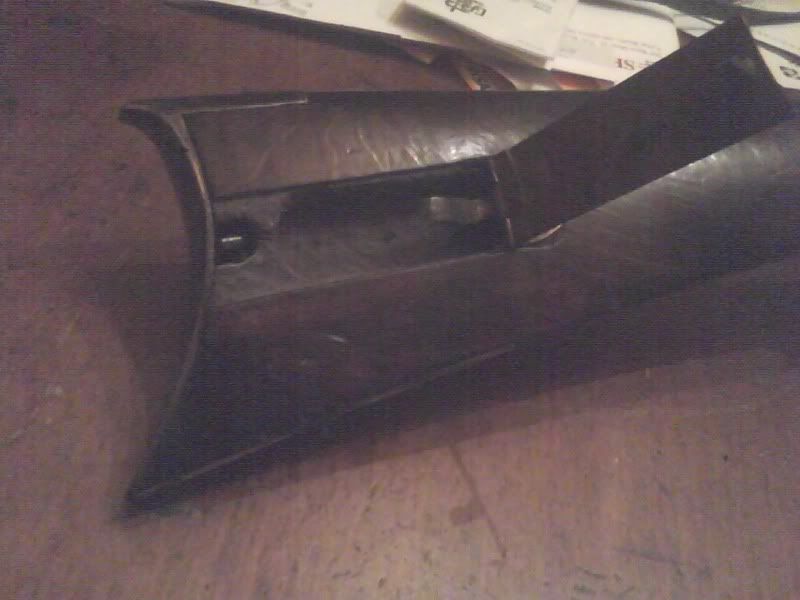
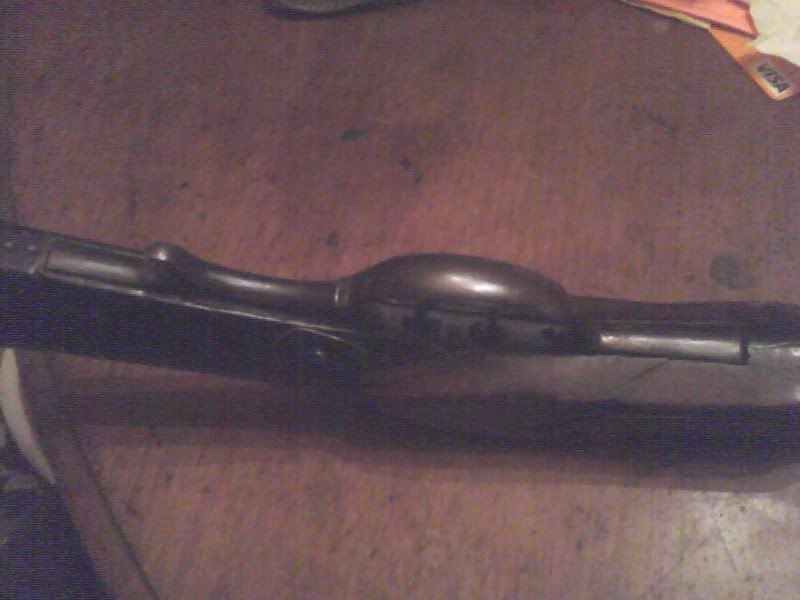

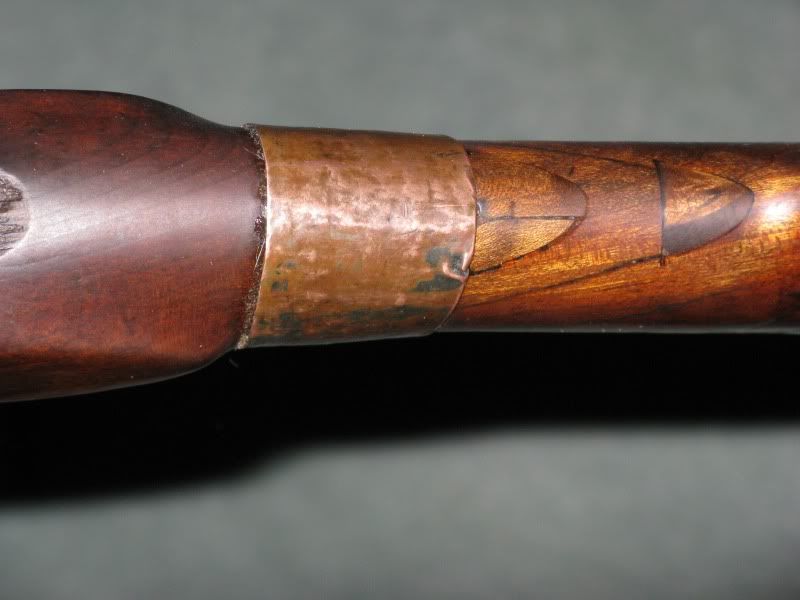
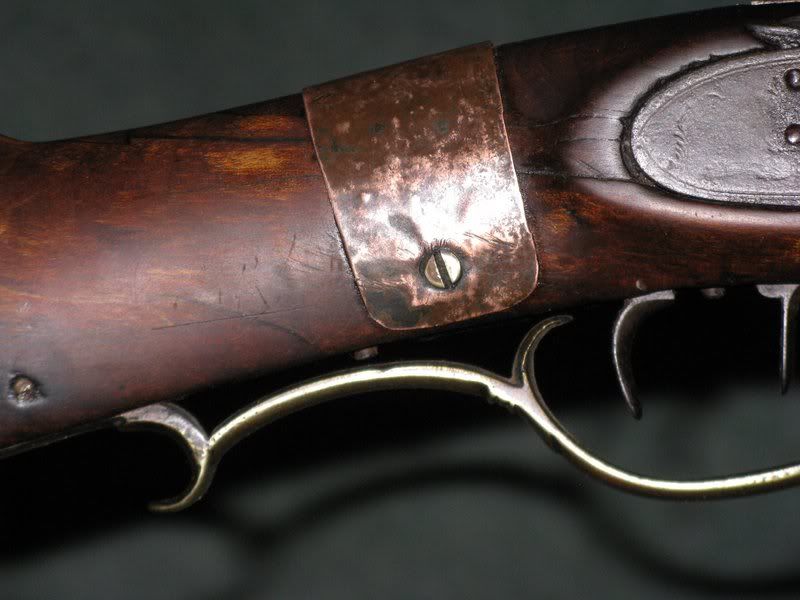
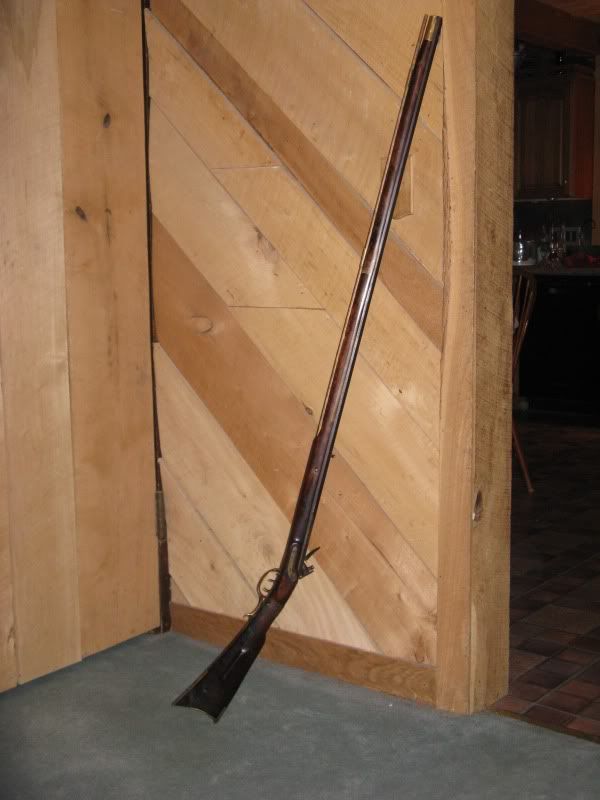
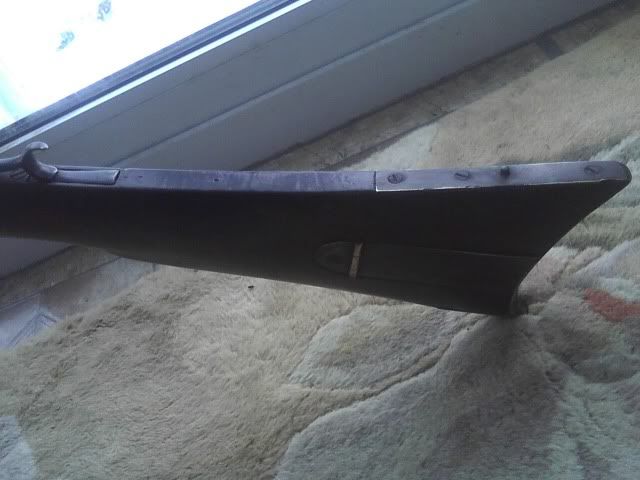
Public Board Comments:
First, the Elwell lock. I know Sellers listed Elwell in Seneca Co, OH, citing Hutslar. I'd love to see where Frank got that! I double checked his first book, published with Shumway, decades ago, and cannot find anything there except a notation that a Marker long rifle had an Elwell lock. Sellers perpetuates about every known error in "listing" books, adding plenty of his own. Horsehockey! This is perhaps most grievous error in Sellers & should be corrected [although you can bet it won't be].
I put together the 5 vol set which the Assn of Ohio Long Rifle Collectors paid for, published & distributed. Nothing in it about Elwell as a lockmaker in Seneca Co.
As to the similarity twixt Leman's work + Deringer. Recall that Henry spent c.1831-34 at Tryon plant nearby learning mass production of arms. I'd give about even chances of the gun shown being a low grade arm sold to various dealers -- as opposed to "trade gun." Possible but I'd sure not buy [or sell] it with that as a promise!
Did Deringer make low grade rifles for the hardware trade like Leman did, or was his product for the Indian Factory system and the Rocky Mountain trade?
CURIOUS - Are there any proof-marks on the rear, left barrel flat ? Many, many years ago I had an original-flint, LEMAN rifle similar to yours that had a "P" in the
sunken oval stamp plus a second proof or acceptance mark which was virtually indiscernible.
No Arnie, I can't see anything in the way of stamps on the left breech barrel flat. There are some underneath the barrel. I'll take a look tomorrow morning when my eyes aren't so tired and let you know what I find.
Although Sellers says in effect Col Robt Gardner is obsolete his 50+ year old book, Small Arms Makers, still has much to offer. Henry Deringer Jr most famous of the small sing;e-shot pistol makers, specialized in military arms, notably model 1817 "common" rifles on gov't contract. Gardner also shows contracts for "Indian guns' for gov't. His attempt to offer the 1817 pattern rifle as a percussion arm apparently fizzled in wake of model 1841 Mississippi rifles. Perhaps he sold a handful to states. He may also have sold a small batch yo various states in both flint & percussion periods. The most under-researched area of martial arms is state contracts. Some early state arms contractors are essentially unknown. He made have made some low grade "KY" rifles or even }plains rifles" although I have never seen any -- but then I have never seen any of his Amerindian trade guns. If course he devoted an increasingly large percent of his shop time to the manufacture of the small single-shot pistols known as "Lincoln derringers" or even just plain derringers. To my knowledge he never moved into modern technological advances, including breech-loading arms [let alone repeating arms]. Back to Gardner: he has a worthy lost of Deringer's gov't contracts.
At age 70 I constantly learn new things. I cannot comment on the "Indian Factory system" since I have no idea what it is & never have heard the term before.
Last, there is no doubt in my mind that the gun is a very early Leman. Curious that commercial lock since Leman made locks and many of his locks were sold to others. Like the Nat'l Parks "Service" many have misidentified unsigned guns made by others as Lemans since they mount Leman locks. I presume Leman made this gun before he was fully tooled up to make his own locks.
The rifle being a very early LEMAN is what I also was thinking Scooter. If it's true that Henry Leman had originally started making rifles in the little shop that he'd set up in his fathers brewery, then this rifle might be one of the first that Leman put together in 1834 or 35 when he was still possibly following the pattern of rifle that he'd learned to make while apprenticed to Fordney. Also, it could have been made before Leman ever started using the labor of others in his mass production and before he ever received any Govt. contracts for Indian trade rifles or smooth bores. It's without a doubt a very crude and simple rifle whose inletting for the barrel wasn't done with an octagon shaped router. The channel was cut out with a carpenters knife or chisel of some type with a multitude of cuts observable along it's full length. The buttplate was originally inletted with a screw hole that apparently was decided to be not far enough down and so wasn't used. Another screw hole was inletted into the buttplate further down towards the toe and a screw put through it into the wood. Used butt plate from another rifle that was scrapped? Maybe, but the capital "J" that is stamped into the underside of it is also stamped into the hidden side of the patchbox lid, tigger guard & sideplate. So maybe the parts were all from the same earlier rifle? Maybe young Henry Leman started out making rifles using salvaged, discarded and unfinished parts that he'd accumulated during his time under Fordney and Tryon? As far as I know, none of Leman's earliest rifles are available for a comparative study are they? On the underside of the stock just behind the trigger guard and above the toe plate are a series of punches that are not holes for quills. The punches are shallow and of uniform depth with a rounded bottom. Are these possibly a counting system used to keep track of a sequence of rifles made? I've attached some photo's showing them.
I just remembered something else about this rifle that's of interest. There are at least four cuts in the iron barrel that were done with a narrow V shaped edge of a carbon blade with some force. The metal on the down stroke side of the two deepest cuts was peeled upwards while the upper edge of the cut, from the direction the blade was coming in at an angle was level. A line can be drawn along the angle of the cuts to a position where they both meet. This position is a little over 2 ft. from the barrel and could be where the handle of a sword would've been. There are two other cuts that are more shallow as if they each were inflicted in the barrel with a lighter back stroke whose origins, according to where the angles of the cuts meet, would indicate that the part of the blade that made contact with the barrel was about a foot up from the handle. It also appears as if the barrel would've had to have been pointing down at an angle from above when the cuts were made. All the cuts are within one or two feet of the muzzle. The two deepest cuts were inflicted at an angle from the breech towards the muzzle. The two lighter back handed cuts were done with a stroke from the muzzle towards the breech. None were inflicted at a 90 degree angle to the barrel. Many years ago, when I had the missing wood replaced on the rifle, I'd carefully peened the displaced metal on the downward side of each of the cuts back into place using a broad, flat ended and square shaped piece of steel. No indentations of the original surface was made during this procedure. The cuts are still clearly there and have not been filled in with any weld. I'll post some pictures of the closed cuts here as soon as I can take some halfway decent and clear photo's with my cell phone camera. The cuts are all above what would've been the top edge of the wood along the barrel when the stock was still intact, so I believe that the cuts were made when the rifle was being used and still intact, and not by some kid with a corn knife years later.
That is a lot of speculation about Leman's early work. Fordney made a sharp, well made rifle and there are plenty of examples of Lemans personal work that show he had a fine hand. He supplied the Western rifles after the end of the Rocky Mountain beaver trade and the demand for inexpensive rifles for the domestic hardware trade until after the Civil War.
About Deringer. Deringer supplied the Indian department with Treaty rifles during the removals of the eastern tribes to OK; One rifle and blanket to every man, one pot to every family. The Government had " government manufactories" on the frontier that supplied well made products at a good price, to the Indians in direct competition to independent Indian traders.

